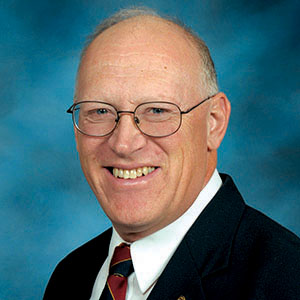Kansas Profile – Now That’s Rural: Marci Spaw, Wabaunsee Museum
Sept. 17, 2023
By Ron Wilson, director of the Huck Boyd National Institute for Rural Development at Kansas State University
![]() A new project uncovered something old.
A new project uncovered something old.
That’s what happened in Alma, where the county historical museum staff were working on renovations and made an unexpected find – right underneath their feet. This museum is working to honor and preserve the history and culture of Wabaunsee County.
At right: Marci Spaw | Download this photo
During the last two weeks, we’ve learned about remarkable women in business at Alma. Remarkable things are happening at the county historical museum in Alma, too.
Marci Spaw is executive director of the Wabaunsee County Historical Society and Museum. Spawgrew up on a farm near Overbrook, went to K-State for bachelors and masters degrees, and met and married Christopher. They now live out in Wabaunsee County’s rural Farmer township, population 119 people. Now, that’s rural.
Spaw joined the museum staff in 2020 and became the full-time executive director in 2022. The mission of the Wabaunsee County Historical Society and Museum is to record the history and culture of the people of the county over time, provide education, and collect, preserve and exhibit artifacts relating to the county.
Alma is the county seat. Wabaunsee County includes most of the territory of the Native Stone Scenic Byway, and Alma is known as the City of Native Stone. So, it is fitting that the museum is located in a historic stone building in the heart of downtown Alma.
The museum has various rooms and glass cases displaying an extensive collection of artifacts, from buggies and tractors to arrowheads and classic photos. Genealogy files can help search for ancestors. One remarkable feature is an amazing collection of Native American stone tools, catalogued by retired archeologist Bob Blasing.
“We have over 2,000 stone tools, some dating back 10,000 years,” Spaw said.
One visitor wrote about the museum: “This large museum has a fantastic diverse display of artifacts.” Another wrote: “Incredible collection of artifacts detailing the interesting history of the area.”
The museum also performs educational outreach. In 2023, museum staff developed youth educational programming in cooperation with the Pottawatomie-Wabaunsee Regional Library, the Grimm-Schultz Farmstead, and K-State Research and Extension’s office Wabaunsee County. This included hands-on kids’ experiences such as making bread and butter, wash day, quilting bee, and a day in a one-room schoolhouse.
In 1982, the county acquired the former Farmers Union co-op building next door to the museum. For decades, the building was used as an annex for storage. As the museum needed more space, the hope was to expand into the annex.
To make needed improvements, the museum obtained grants from the Kansas State Historical Society, Kansas Department of Commerce, and Kansas Tourism.
“Our members donated the necessary matching funds,” Spaw said. The renovated space will be complete by the end of 2024.
While this work was being done, the workers made a remarkable find: A hidden underground stone cellar under the annex floor. This man-made “cave” built of laid limestone featured an arched-ceiling design and a long stone staircase downstairs from the annex building.
Such arched cellars were common in the 1860s. Without the benefit of electricity or any form of refrigeration beyond ice harvested from streams in the winter, virtually every building constructed in Alma in the 1800s contained a cellar beneath it for storage of perishable foodstuffs.
When a newer building was built on this lot in 1908, the cellar entrance was covered by the new floor, hiding it from the public view for more than a century.
Spaw said she is excited about this and other elements of the museum’s historical programming. “We have a big facility for a small county museum,” Spaw said. “This is a great opportunity to showcase rural history and culture. We want Kansas kids to fall in love with Kansas.”
For more information, go to www.wabaunseecomuseum.org.
A new project discovered something old. The modern renovation of the museum’s building uncovered a stone cellar that was built more than a century ago.
We salute Marci Spaw and all those involved with the Wabaunsee County Historical Society and Museum for making a difference by honoring and exploring this history. They are helping old-time history become fresh and new.
Audio and text files of Kansas Profiles are available at http://www.kansasprofile.com. For more information about the Huck Boyd Institute, interested persons can visit http://www.huckboydinstitute.org.
***
The mission of the Huck Boyd National Institute for Rural Development is to enhance rural development by helping rural people help themselves. The Kansas Profile radio series and columns are produced with assistance from the K-State Research and Extension Department of Communications News Media Services unit. A photo of Ron Wilson is available at http://www.ksre.ksu.edu/news/sty/RonWilson.htm. Audio and text files of Kansas Profiles are available at http://www.kansasprofile.com. For more information about the Huck Boyd Institute, interested persons can visit http://www.huckboydinstitute.org.


